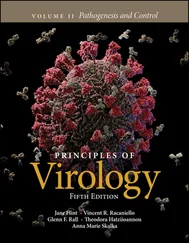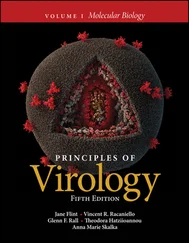Source: Based upon Villarreal, L.P. and DeFilippis, V.R. (2000). A hypothesis for DNA viruses as the origin of eukaryotic replication proteins. Journal of Virology 74: 7079–7084.
Viruses have a constructive as well as destructive impact on society
Often the media and some politicians would have us believe that infectious diseases and viruses are unremitting evils, but to quote Sportin’ Life in Gershwin's Porgy and Bess , this “ain't necessarily so.” Without the impact of infectious disease, it is unlikely that our increasingly profound understanding of biology would have progressed as it has. As already noted, much of our understanding of the mechanisms of biological processes is based in part or in whole on research carried out on viruses. It is true that unvarnished human curiosity has provided an understanding of many of the basic patterns used to classify organisms and fostered Darwin's intellectual triumph in describing the basis for modern evolutionary theory in his Origin of Species . Still, focused investigation on the microscopic world of pathogens needed the spur of medical necessity. The great names of European microbiology of the nineteenth and early twentieth centuries – Pasteur, Koch, Ehrlich, Fleming, and their associates (who did much of the work with which their mentors are credited) – were all medical microbiologists. Most of the justification for today's burgeoning biotechnology industry and research establishment is medical or economic.
Today, we see the promise of adapting many of the basic biochemical processes encoded by viruses to our own ends. Exploitation of viral diseases of animal and plant pests may provide a useful and regulated means of controlling such pests. While the effect was only temporary and had some disastrous consequences in Europe, the introduction of myxomavirus – a pathogen of South American lagomorphs (rabbits and their relatives) – had a positive role in limiting the predations of European rabbits in Australia. Study of the adaptation dynamics of this disease to the rabbit population in Australia taught much about the co‐adaptation of host and parasite.
The exquisite cellular specificity of virus infection is being adapted to generate biological tools for moving therapeutic and palliative genes into cells and organs of individuals with genetic and degenerative diseases. Modifications of virus‐encoded proteins and the genetic manipulation of viral genomes are being exploited to provide new and (hopefully) highly specific prophylacticvaccines as well as other therapeutic agents. The list increases monthly.
Viruses are not the smallest self‐replicating pathogens
Viruses are not the smallest or the simplest pathogens able to control their self‐replication in a host cell – that distinction goes to prions. Despite this, the methodology for the study of viruses and the diseases they cause provides the basic methodology for the study of all subcellular pathogens.
By the most basic definition, viruses are composed of a genome and one or more proteins coating that genome. The genetic information for such a protein coat and other information required for the replication of the genome are encoded in that genome. There are genetic variants of viruses that have lost information either for one or more coat proteins or for replication of the genome. Such virus‐derived entities are clearly related to a parental form with complete genetic information, and thus, the mutant forms are often termed defective virus particles.
Defective viruses require the coinfection of a helper virusfor their replication; thus, they are parasitic on viruses. A prime example is hepatitis delta virus, which is completely dependent on coinfection with hepatitis B virus for its transmission.
The hepatitis delta virus has some properties in common with a group of RNA pathogens that infect plants and can replicate in them by still‐unknown mechanisms. Such RNA molecules, called viroids, do not encode any protein, but can be transmitted between plants by mechanical means and can be pathogens of great economic impact.
Some pathogens appear to be entirely composed of protein. These entities, called prions, appear to be cellular proteins with an unusual folding pattern. When they interact with normally folded proteins of the same sort in neural tissue, they appear to be able to induce abnormal refolding of the normal protein. This abnormally folded protein interferes with neuronal cell function and leads to disease. While much research needs to be done on prions, it is clear that they can be transmitted with some degree of efficiency among hosts, and they are extremely difficult to inactivate. Prion diseases of sheep and cattle (scrapie and “mad cow” disease) recently had major economic impacts on British agriculture, and several prion diseases ( kuruand Creutzfeldt–Jacob disease [ CJD ]) affect humans. Disturbingly, the inadvertent passage of sheep scrapie through cattle in England has apparently led to the generation of a new form of human disease similar to, but distinct from, CJD. Details of this are covered in Part IV, Chapter 15.
The existence of such pathogens provides further circumstantial evidence for the idea that viruses are ultimately derived from cells. It also provides support for the possibility that viruses had multiple origins in evolutionary time.
1 Viruses are a part of the biosphere. However, there is active debate concerning whether they should be treated as living or nonliving.Briefly describe one feature of viruses that is also found in cell‐based life forms.Briefly describe one feature of viruses that distinguishes them from cell‐based life forms.
2 Why is it likely that viruses have not evolved from free‐living organisms?
3 Give examples of infectious agents that are smaller self‐replicating systems than viruses.
4 Ebola virus is a deadly (90% case‐fatality rate for some strains) infectious agent. Most viruses, however, are not nearly as lethal. Given the nature of viruses, why would you expect this to be so?
5 Given that viruses are a part of the biosphere in which other organisms exist, what might be the kinds of selective pressure that viruses exert on evolution?
6 Viruses were originally discovered because of their size, relative to known bacterial cells. Tobacco mosaic virus was called a “filterable infectious agent” by this criterion. Why is size not a good defining feature for viruses? What is a better definition?
CHAPTER 2 An Outline of Virus Replication and Viral Pathogenesis
VIRUS REPLICATION
Stages of virus replication in the cell
PATHOGENESIS OF VIRAL INFECTION
Stages of virus‐induced pathology Initial stages of infection – entry of the virus into the host The incubation period and spread of virus through the host Multiplication of virus to high levels – occurrence of disease symptoms The later stages of infection – the immune response The later stages of infection – virus spread to the next individual The later stages of infection – fate of the host
QUESTIONS FOR CHAPTER 2
Viruses must replicate in living cells. The most basic molecular requirement for virus replication is for a virus to induce either profound or subtle changes in the cell so that viral genes in the genome are replicated and viral proteins are expressed. This will result in the formation of new viruses – usually many more than the number of viruses infecting the cell in the first place. When reproducing, viruses use at least part of the cell's equipment for replication of viral nucleic acids and expression of viral genes. They also use the cell's protein synthetic machinery, and the cell's metabolic energy resources.
Читать дальше












